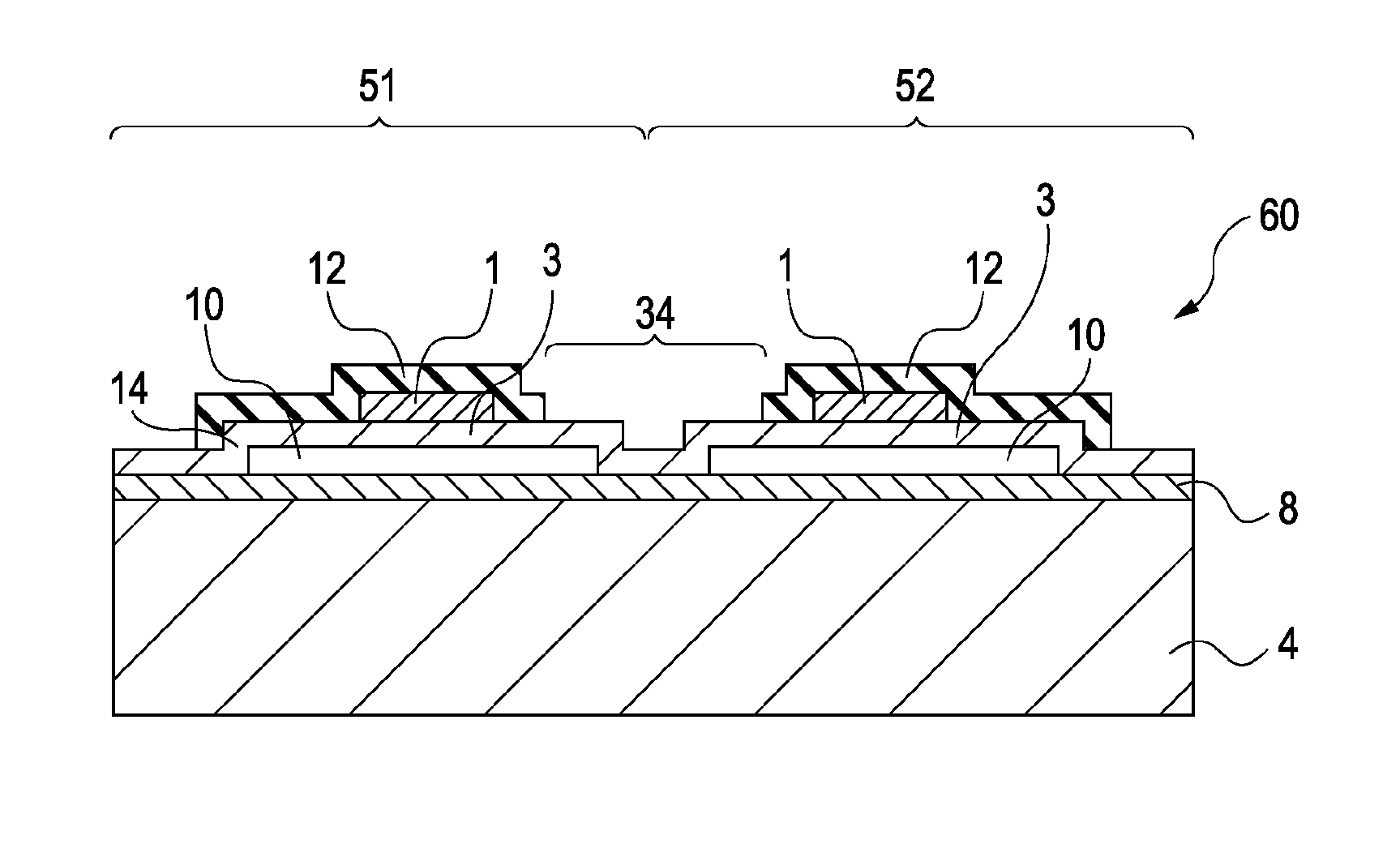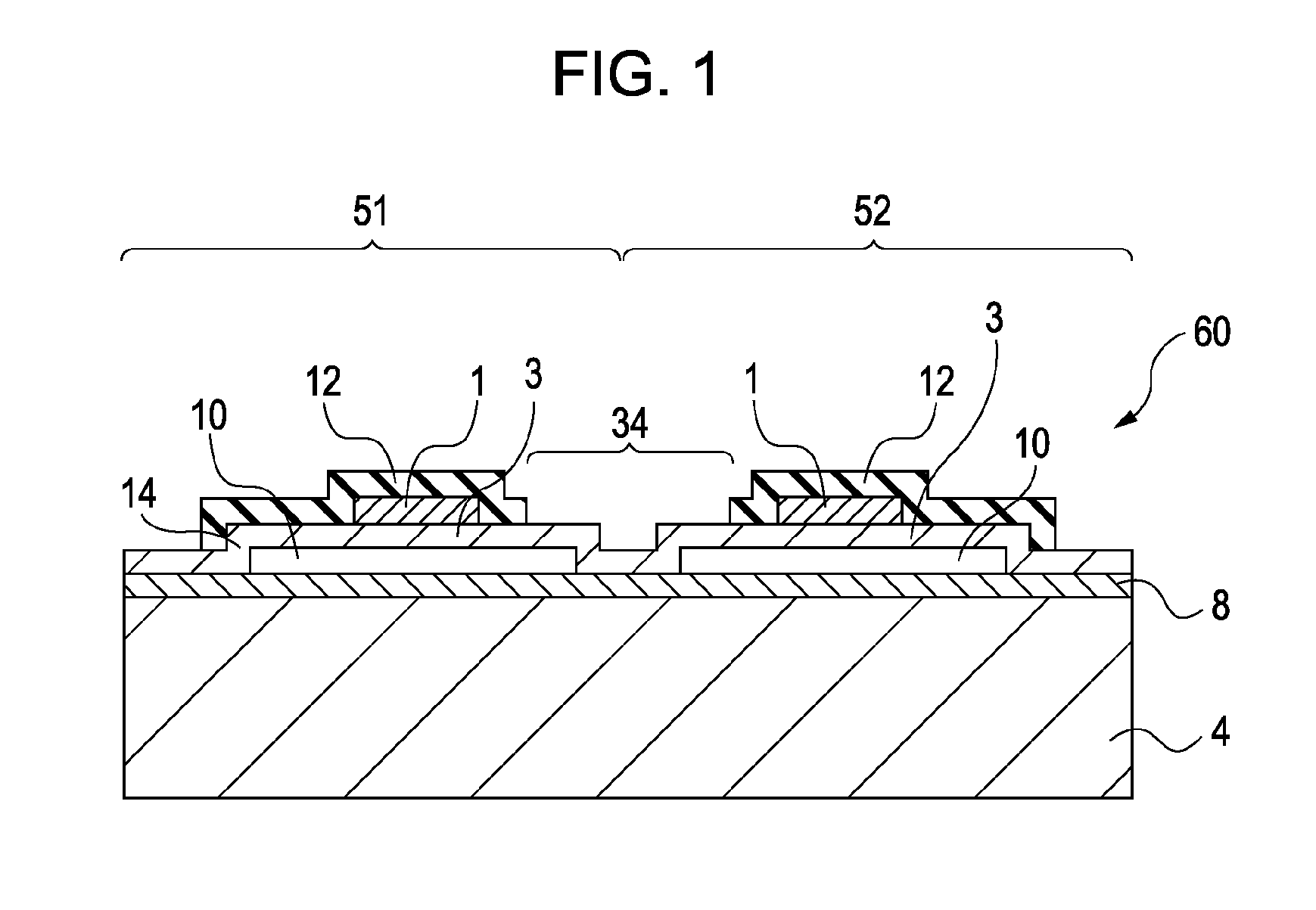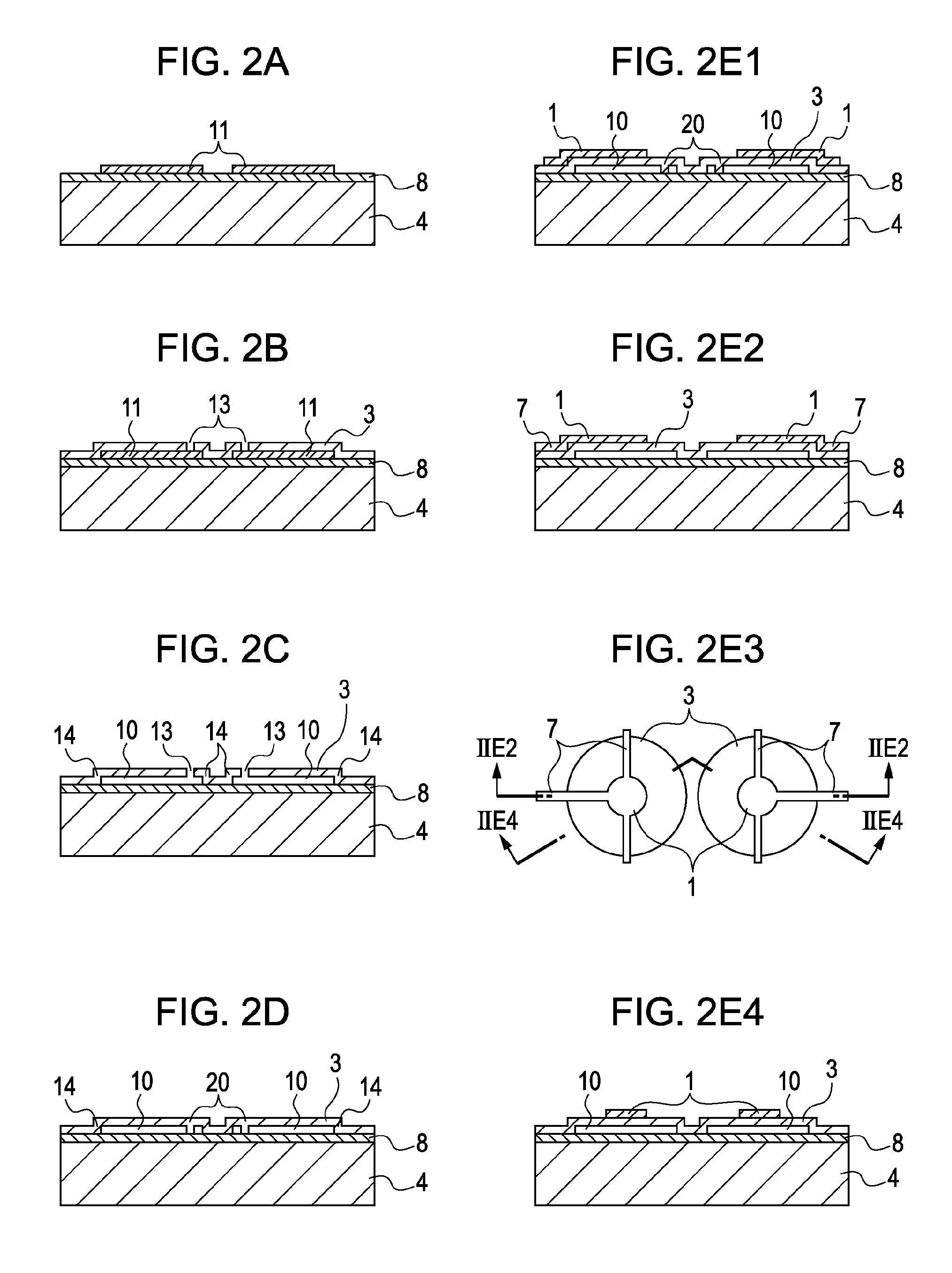Electromechanical transducer and method for manufacturing the same
a technology of electromechanical transducers and transducers, which is applied in the direction of electrical transducers, microelectromechanical systems, mechanical vibration separation, etc., can solve the problems of less displacement, and less mass and rigidity of vibrating membranes, so as to reduce displacement, reduce sensitivity, and provide more mass and rigidity
- Summary
- Abstract
- Description
- Claims
- Application Information
AI Technical Summary
Benefits of technology
Problems solved by technology
Method used
Image
Examples
example 1
[0036]FIGS. 2A to 2E2 and 2E4 and 2E3 are respectively sectional views and a top view describing the steps of Example 1 of a method for manufacturing the electromechanical transducer according to the present invention. To simplify the following description, a patterning step means all steps that include a photolithography step including application of a photoresist to a substrate, drying, exposure, and development; an etching step; a step of removing the photoresist; a step of cleaning the substrate; and a drying step performed in sequence. Although a substrate 4 of this Example is composed of Si as an example, a substrate composed of another material can be used. For instance, an insulating substrate composed of SiO2 or sapphire can be used. FIGS. 2A to 2E2 and 2E4 and 2E3 are respectively sectional views and a top view in which two elements adjacent to each other are formed. However, the number of elements is not limited to two, and any number of elements can be formed using the s...
example 2
[0055]In this Example, an electromechanical transducer is manufactured by the same method as that of Example 1 until the steps shown in FIGS. 2A to 2E4. Subsequently, a protective layer is patterned as shown in a top view of FIG. 5. The protective layer is composed of photosensitive polyimide (e.g., photosensitive polyimide available from Toray Industries, Inc., Product name: Photoneece). With such a material, the protective layer can be directly patterned by precise lithography. Thus, an electromechanical transducer can be easily manufactured compared with the case where an electromechanical transducer is manufactured by the etching method described in Example 1.
[0056]In this Example, the protective layer 12 between the upper electrodes of the two elements adjacent to each other (first element 51 and second element 52) is completely removed as shown in FIG. 5. The larger the distance 2g is, the more the crosstalk of the elements adjacent to each other can be suppressed.
example 3
[0057]In this Example, an electromechanical transducer is manufactured by the same method as that of Example 1 until the steps shown in FIGS. 2A to 2E4. Subsequently, a protective layer 12 is patterned as shown in a top view of FIGS. 6A and 6B. FIG. 6B is a perspective view and the protective layer 12 of FIG. 6A is shown in perspective in FIG. 6B.
[0058]A thermosetting resin (e.g., Product name: OGSOL SI-20 available from Osaka Gas Chemicals Co., Ltd.) is applied as the protective layer. Subsequently, an electrical signal is extracted from the upper electrode 1 through a line 33, the line 33 being connected to an external current source 32. When an electric current is applied to two ends of the upper electrode 1, the upper electrode 1 itself functions as a resistance wire and generates heat. Consequently, the thermosetting resin near the upper electrode can be cured. Particularly when the vibrating membrane 3 is a poor thermal conductor, for example, a nitride film SiNX, the heat is ...
PUM
| Property | Measurement | Unit |
|---|---|---|
| sheet resistance | aaaaa | aaaaa |
| sheet resistance | aaaaa | aaaaa |
| sheet resistance | aaaaa | aaaaa |
Abstract
Description
Claims
Application Information
 Login to View More
Login to View More - R&D
- Intellectual Property
- Life Sciences
- Materials
- Tech Scout
- Unparalleled Data Quality
- Higher Quality Content
- 60% Fewer Hallucinations
Browse by: Latest US Patents, China's latest patents, Technical Efficacy Thesaurus, Application Domain, Technology Topic, Popular Technical Reports.
© 2025 PatSnap. All rights reserved.Legal|Privacy policy|Modern Slavery Act Transparency Statement|Sitemap|About US| Contact US: help@patsnap.com



